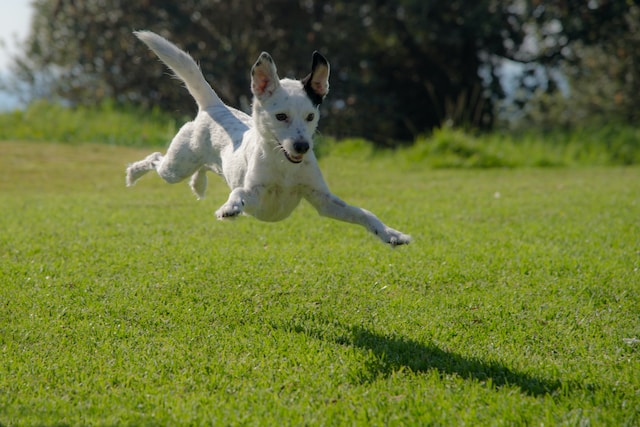
Just picture yourself out for a stroll on a nice afternoon, taking in the sights and sounds of your area. A dog appears out of nowhere and bites without warning. It’s normal to be shaken up and confused after an experience like that. Don’t fret; this manual will arm you with the six fundamental steps you need to take to respond calmly and responsibly to such situations. The correct action must be understood for the sake of both your own and the dog’s safety. Delve into these crucial measures to empower you to take charge of the issue and guarantee a healthy recovery.
Determine the Degree of Bite
It is important to determine the extent of a dog bite as soon as possible. Stop briefly and look the wound over thoroughly for symptoms of infection, profuse bleeding, or deep punctures. If the bite doesn’t seem too serious, you can move on to first aid. On the other hand, you should seek emergency medical assistance for more serious injuries like deep or gaping wounds or if you are unsure of the degree of the damage. Take the time to accurately analyze the bite’s severity. You may take the right steps toward receiving medical attention or first aid to recover fully and rapidly.
Scrub the Wound Gently
Proper wound care must be administered after determining the extent of the dog bite. Remove any dirt, debris, or bacteria by gently cleaning the afflicted area with mild soap and water. Hydrogen peroxide and alcohol might irritate the skin further and should be avoided. After drying the wound with a clean towel, use an antibiotic ointment purchased at a drugstore. Put a clean bandage or gauze pad over the bite to keep dirt and germs out. For the damaged area to recover quickly and without further issues, it must be cleaned thoroughly. Always keep an eye out for signs of infection and get medical help if you need it to make sure the wound heals properly.
Use Basic Life Support:
Applying first aid after washing the wound from a dog bite helps speed healing. First, use a clean cloth to pat the wound dry carefully. Then, to avoid infection, cover the wound with an antibiotic ointment you may buy over the counter. Put a clean bandage or gauze pad over the bite to keep it clean and free of germs. Be on the lookout for any signs of infection, such as redness, swelling, or pus from the incision. The bandage should be changed frequently, and the ointment should be reapplied as needed. Never pick at the scab or pop any blisters that may form; doing so might cause the infection to spread. By taking the necessary precautions to treat the dog bite, you can speed up the healing process and lessen the likelihood of infection.
Find the Owner and Dog’s Name
After a dog bite occurrence, it’s important to track down the dog’s owner and identify the dog. Take a cool, collected approach, and offer to exchange contact information with the owner if possible. You should also inquire about any legal actions taken against the dog’s owner, as well as the dog’s immunization and health records, especially if you are considering pursuing a dog bite lawsuit to recover financial damages from a dog attack. The likelihood of contracting rabies or another disease from a dog can be estimated by checking its vaccination status. If the dog’s owner is difficult to find or otherwise uncooperative, you may need to file a report with animal control or the police to pursue legal action to recover financial damages from a dog attack. In addition to being required by law, identifying the dog and its owner is important for public safety and conscientious pet ownership.
Fill Out a Report
It is critical for both public safety and legal purposes that the dog bite be reported. You should immediately report this incident to your local animal control or health department. In addition to the date, time, and place of the bite, please include a description of the dog and its owner (if known), as well as any information you may have about the dog’s behavior immediately preceding the bite. Include your contact information and the identification of any witnesses who may vouch for you. If the bite leads to issues or litigation, having an official record of the incident like this one on hand can be invaluable. By filing a report, you help put into action local efforts to discourage further attacks and encourage responsible pet ownership.
Get Medical Help if You Need It
Seeking medical assistance is necessary if you suspect that the dog bite is more serious than a minor injury or are unsure of the attack’s severity. A prompt medical evaluation can help identify and treat any potential consequences early on, even in the case of seemingly tiny bites that pose the risk of infection. Get in touch with your doctor or head to the emergency room, where you can get the wound checked out and cleaned up. The healthcare provider’s recommendation for treatment of a bite may include tetanus injections, antibiotics, or something else entirely. In addition to protecting your health, getting checked out right away is essential if you plan on filing a claim or taking legal action relating to the incident. Keep in mind that you should never put your health or safety at risk by delaying getting medical attention.
Conclusion
You should know what to do if a dog bites to protect yourself and others. The first stages toward a speedy recovery are determining the extent of the damage caused by the bite, properly cleansing the wound, and administering first assistance. Getting medical help when you need it is also crucial for avoiding complications and dealing with any illnesses you might have right away. Remember that you and your dog’s safety depend on your ability to remain composed and well-informed in such situations.